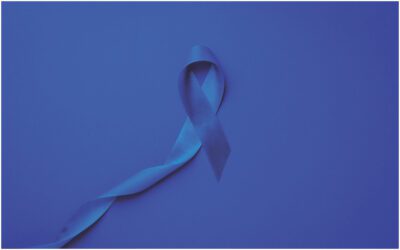As I am writing this article, we have had two weeks of over 100º weather. Withered grass crunches under my feet and just walking outside results in sweating! My thoughts quickly turn to the risks for friends who work outside in construction and lawn care, elderly neighbors with inadequate access to air conditioning, and student athletes who will soon resume athletic training in preparation for fall sports.
Hot, humid days like these increase our risk of heat-related illness. Our bodies normally maintain a healthy core body temperature through a process called thermoregulation, controlled by a region of the brain called the hypothalamus. The hypothalamus sends signals to the skin and capillaries (small blood vessels near the surface of skin) activating a process that releases heat from the surface of the skin. When your body temperature is elevated, your body relies on the evaporation of sweat from the surface of the skin to assist in releasing heat into the environment. As the environmental temperature and humidity increase, sweating becomes less effective. When the rate of heat entering and being produced by the body exceeds the amount of heat able to be released from the body, the risk for heat-related illness develops.
There are four presentations of heat-related illness which can occur during periods of overheating. These are heat rash, heat cramps, heat exhaustion and heat stroke. While heat rash and cramps are mild presentations, heat stroke and exhaustion are more severe. Working outside during the summer months or working indoors in a hot, humid environment such as a manufacturing plant increases the likelihood of heat-related illness. Additional risk factors include dehydration, obesity, poor physical condition, and naivety to the hot environment. Medical conditions such as diabetes, kidney disease, and heart conditions may increase the risk as well. Occupational requirements for heavy clothing such as fire, police, or industrial roles can also increase the risk. Student athletes also experience a higher rate of heat-related illness with approximately 9,000 cases per year – the majority of those occur during football season. Finally, children less than four years of age and individuals sixty-five years of age and older are also at increased risk.
HEAT RASH
Heat rash is the mildest form of heat-related illness and presents as red, itchy skin which may also feel “tingly.” Small bumps or blisters may form in skin folds where skin touches skin or areas of the skin that stay moist such as the neck, underarms, or upper chest. The rash occurs when excessive sweat becomes trapped under the surface of the skin resulting in obstruction of the sweat gland. Core body temperature is usually normal. Treatment involves use of light, breathable fabrics, application of powder to combat moisture on the skin, and seeking shade when available. Ointments should be avoided in this situation as they result in blockage of the sweat gland.
HEAT CRAMPS
Electrolytes are minerals in your body that have an electric charge. They are in your blood, urine, tissues, and other body fluids. They are important because they help balance the amount of water in your body. Heat cramps occur when excessive amounts of electrolytes such as sodium and magnesium are lost through sweating. Usually, this type of loss occurs through exercising. Heat cramps present as pain and spasms in the legs, arms, and abdomen. Core body temperature is often normal. Heat cramps can be improved by rest and rehydration with fluid containing electrolytes. It is recommended to drink water every fifteen minutes in hot, humid environments and frequently consume drinks or snacks containing electrolytes.
HEAT EXHAUSTION
Heat exhaustion occurs with excessive loss of electrolytes and water from the body through sweating and presents with quick, shallow breathing, heavy sweating, thirst, weakness, irritability, muscle cramps, dizziness, headache, and decreased urine output. Core body temperature is usually elevated. Treatment involves moving the individual to a cool, well-ventilated area, removal of heat-retaining clothing, application of cool compresses to the face, neck, and chest, and slow, steady rehydration with cool fluids containing electrolytes. Evaluation by the individual’s personal physician may also be necessary.
HEAT STROKE
Heat stroke is the most severe heat-related illness. It occurs when the body loses the ability to control body temperature. The sweating mechanism fails, and core body temperature rises rapidly, sometimes up to 106º Fahrenheit, over a matter of minutes. Without immediate emergent care heat stroke can quickly progress to permanent disability or even death. Early signs of heat stroke include confusion, altered mental status and slurred speech. Initially, sweating may be profuse, but progresses to hot, dry skin as heat stroke develops. As the body temperature rises, seizures and loss of consciousness may occur. Treatment is based on rapid cooling of the affected individual through removal of heat-retaining clothing, circulation of air, application of cool, wet towels to the face, torso and extremities, and placement of ice packs in the groin and under the arms. Emergency medical personnel should be called, and the patient should be transported to the hospital for monitoring and treatment.
RHABDOMYOLYSIS
Rhabdomyolysis is another heat-related condition which can develop in individuals engaging in strenuous, prolonged exercise, such as marathon runners. Rhabdomyolysis is the rapid rupture and death of muscle cells leading to the release of large amounts of electrolytes, mainly potassium, and proteins into the bloodstream resulting in abnormal heart rhythms and damage to the kidneys. Early symptoms may include muscle cramps and pain as well as dark coloration of the urine. Prevention involves adequate hydration – greater than 80-100 ounces of water per day – and conditioning properly prior to strenuous physical activity as well as frequent breaks to allow muscle recovery. Treatment includes aggressive hydration with intravenous fluids in a hospital setting.
PREVENTION
Prevention is key and involves planning outdoor activities earlier in the day, maintaining adequate hydration with water or fluids containing electrolytes (a minimum of sixty ounces of water per day for most individuals), avoiding alcohol intake as this results in worsening dehydration, seeking shade when able, and looking out for younger children and the elderly who are more susceptible. Additionally, student athletes or those engaging in prolonged strenuous activity should make sure to build their endurance with graded training and plan frequent rests during workouts or outside activity. Engaging in water-related activities such as a swimming pool or a splash pad can help to prevent over heating during hot summer days – just remember to wear your sunscreen, drink plenty of cool water, and practice water safety.
Kendall Wagner, M.D. is a regular healthcare contributor to Do South® Magazine.
Chaffee Crossing Clinic
11300 Roberts Boulevard, Fort Smith, Arkansas
479.242.5910
chaffeecrossingclinic.com




